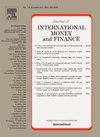U.S. monetary policy and portfolio spillover effects: The role of global production network
IF 2.8
2区 经济学
Q2 BUSINESS, FINANCE
引用次数: 0
Abstract
This paper evaluates the impact of global production linkages on the transmission of U.S. monetary policy shocks to capital flows across countries (e.g., portfolio flows). The spatial autoregression (SAR) model is applied to separate the total influence of U.S. monetary policy into two distinct components: a direct effect and a network effect. The empirical results show that around 70 % of the total impact of U.S. monetary policy shocks on capital flows can be attributed to the network effect of global production network. Moreover, we prove that stock market returns play a significant role in the underlying mechanism. The coordination of the monetary policies between target countries and the United States could reduce the network effects. The additional analysis reveals that countries with larger size, more reliance on dollar invoicing, greater financial openness and higher levels of financial development are more susceptible to the network impact of U.S. monetary shocks.
美国货币政策与投资组合溢出效应:全球生产网络的作用
本文评估了全球生产联系对美国货币政策冲击对各国资本流动的传导的影响(例如,投资组合流动)。应用空间自回归(SAR)模型将美国货币政策的总影响分为两个不同的组成部分:直接效应和网络效应。实证结果表明,美国货币政策冲击对资本流动的总影响中,约70%可归因于全球生产网络的网络效应。此外,我们证明了股票市场收益在潜在机制中起着显著的作用。目标国与美国货币政策的协调可以减少网络效应。另一项分析显示,经济规模越大、对美元计价依赖程度越高、金融开放程度越高、金融发展水平越高的国家,更容易受到美国货币冲击的网络影响。
本文章由计算机程序翻译,如有差异,请以英文原文为准。
求助全文
约1分钟内获得全文
求助全文
来源期刊

Journal of International Money and Finance
BUSINESS, FINANCE-
CiteScore
4.20
自引率
4.00%
发文量
141
期刊介绍:
Since its launch in 1982, Journal of International Money and Finance has built up a solid reputation as a high quality scholarly journal devoted to theoretical and empirical research in the fields of international monetary economics, international finance, and the rapidly developing overlap area between the two. Researchers in these areas, and financial market professionals too, pay attention to the articles that the journal publishes. Authors published in the journal are in the forefront of scholarly research on exchange rate behaviour, foreign exchange options, international capital markets, international monetary and fiscal policy, international transmission and related questions.
 求助内容:
求助内容: 应助结果提醒方式:
应助结果提醒方式:


